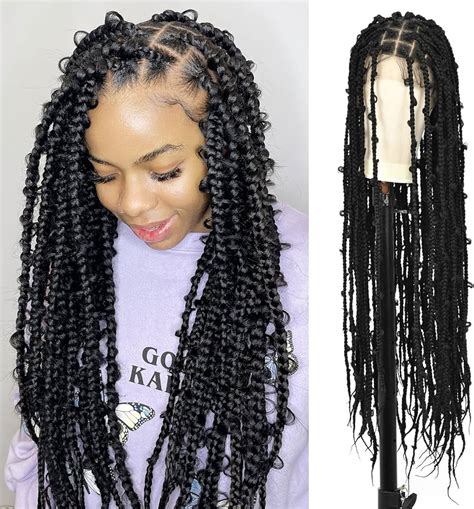Wigs are a versatile tool that can help you transform your look in an instant. However, if you want to achieve a natural and seamless appearance, it’s crucial to choose the right braid to put underneath your wig.

The Importance of Choosing the Right Braid
Choosing the wrong braid can ruin the illusion of a natural hair growth pattern. It can also cause discomfort, itching, and even hair breakage. The ideal braid should be:
- Flat and smooth to avoid creating bumps or lines under the wig.
- Tight enough to hold the wig securely in place, but not so tight that it’s uncomfortable.
- Durable enough to withstand the friction of wearing a wig.
Types of Braids for Under Wigs
There are several types of braids that can be used under wigs, including:
Cornrows
Cornrows are tight, raised rows of hair that run parallel to the scalp. They’re a good option for people with thick or curly hair, as they can be braided very tightly. However, they can be time-consuming to create and may be uncomfortable for some people.
French Braids
French braids are more intricate than cornrows. They’re created by taking three strands of hair from the top of the head and braiding them together. The braid is then continued down the back of the head, adding hair from the sides as you go. French braids are flatter than cornrows, making them less noticeable under a wig.
Dutch Braids
Dutch braids are similar to French braids, but they’re created by taking three strands of hair from the underside of the head and braiding them together. This creates a raised effect, which can be more noticeable under a wig.
Flat Braids
Flat braids are created by taking three strands of hair and braiding them together without crossing them over. This creates a flat, smooth braid that’s ideal for people who want to avoid any bumps or lines under their wig.
Choosing the Best Braid for Your Hair Type
The best braid for you will depend on your hair type and the style of wig you’re wearing. If you have thick or curly hair, you may need to use a tighter braid, such as cornrows or French braids. If you have fine or thin hair, you can use a looser braid, such as a Dutch braid or a flat braid.
It’s also important to consider the style of wig you’re wearing. If you’re wearing a tight-fitting wig, you’ll need to use a braid that’s flat and smooth. If you’re wearing a looser-fitting wig, you can use a braid that’s more raised or intricate.
How to Braid Your Hair for a Wig
Once you’ve chosen the right braid, it’s time to braid your hair. Here are the steps:
- Start by brushing your hair to remove any tangles.
- Divide your hair into two sections, one on the left and one on the right.
- Take a small section of hair from the left side and divide it into three strands.
- Cross the left strand over the middle strand and then the right strand over the middle strand.
- Continue braiding the hair by taking a small section from each side and crossing it over the middle strand.
- Once you reach the nape of the neck, secure the braid with a hair elastic.
- Repeat the process on the right side of your head.
- Once both sides are braided, connect the two braids at the back of your head with a hair elastic.
Tips for Braiding Your Hair for a Wig
Here are a few tips for braiding your hair for a wig:
- Use a small amount of mousse or hairspray to help keep your hair in place.
- Braid your hair tightly enough to hold the wig securely, but not so tightly that it hurts.
- If you’re using a lace front wig, be sure to braid your hair away from the hairline. This will help to create a more natural look.
- If you’re having trouble braiding your hair yourself, you can ask a friend or family member to help you.
Conclusion
Choosing the right braid to put under a wig is essential for achieving a natural and seamless look. By following the tips in this guide, you can choose the best braid for your hair type and the style of wig you’re wearing.
